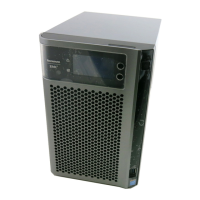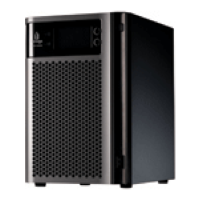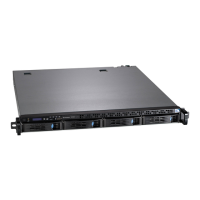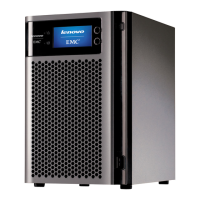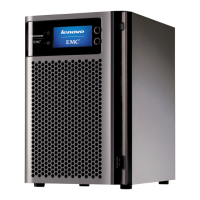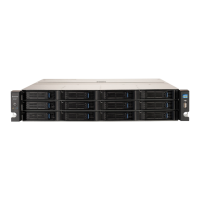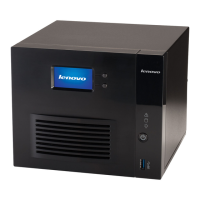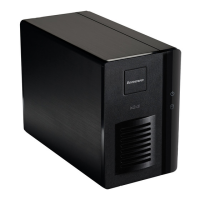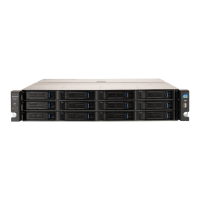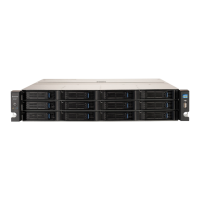
Do you have a question about the Lenovo PX12-450R and is the answer not in the manual?
| Device Type | NAS server |
|---|---|
| Storage Capacity | 0 GB |
| Storage Drive Type | HDD |
| RAID Support | Yes |
| Network Interface | Gigabit Ethernet |
| Connectivity Technology | Wired |
| Data Link Protocol | Ethernet, Fast Ethernet, Gigabit Ethernet |
| Hard Drive Capacity | 0 GB |
| Installed Devices / Modules Qty | 0 |
| Max Supported Qty | 12 |
| Networking | Gigabit Ethernet |
| Hot-Swap Support | Yes |
| Product Type | NAS |
| Drive Bays | 12 |
| RAID Levels | RAID 0, RAID 1, RAID 5, RAID 6, RAID 10 |
Overview of initial setup, connection, and basic configuration steps for the px12-450r.
Steps to discover the px12-450r if it's not automatically detected on the network.
Configuring NIC bonding, VLANs, jumbo frames, and manual network settings.
Naming the device and initial setup for Active Directory integration.
Steps to incorporate the px12-450r into an existing Active Directory environment.
Customizing feature display and setting access permissions for non-administrator users.
Configuring email alerts, event logging, and system status monitoring.
Setting time zones, display language, and printer configurations.
Setting up Personal Cloud, security features, and file sharing options.
Overview of file sharing capabilities and access interfaces for the px12-450r.
Creating and organizing shares, managing share information, and access permissions.
Overview of supported protocols for file sharing: AFP, Bluetooth, FTP, NFS, rsync, WebDAV, Windows Sharing.
Configuring the home page and automated content distribution via email.
Sharing content via social media and through the Personal Cloud feature.
Using Copy Jobs for data transfer and importing content from USB devices.
Understanding iSCSI for high-speed data transmission and storage.
Steps to create, enable, connect, and manage iSCSI drives and CHAP access.
Procedure for safely deleting iSCSI drives from the network storage.
Explains how content is stored in shares and iSCSI volumes within storage pools.
Creating and managing data storage pools with RAID protection options.
Creating a cache storage pool using SSDs to enhance read/write performance.
Associating a cache pool with a data storage volume for performance gains.
Creating and managing volume snapshots for point-in-time data backups.
Creating and managing volumes within storage pools, including encryption.
Procedure for deleting storage pools and their contained data.
Modifying RAID protection types for storage pools to enhance data redundancy.
Installing and configuring new hard drives for the px12-450r storage system.
Settings for managing drives, including write caching and global management.
Viewing the status and health of drives and storage pools.
Overview of methods and applications for backing up and restoring data.
Setting up Time Machine backups from Mac client computers to the px12-450r.
Creating and managing copy jobs for transferring and backing up files.
Using Mozy, Avamar, and Amazon S3 for backup and restore operations.
Explanation of security features and the need for securing shares and data.
Steps to enable security and create an administrator account for system management.
Creating users to grant specific access rights to network storage content.
Overview of managing users and groups, including adding, changing permissions, and quotas.
Managing groups, removing users, changing permissions, and deleting groups.
Managing users and groups from an Active Directory domain for access control.
Configuring and managing both local and Active Directory users simultaneously.
Explanation of Personal Cloud, its security, and key terms.
Setting up, creating, and configuring Personal Cloud settings and router port forwarding.
Inviting users, adding trusted devices, and managing them within the Personal Cloud.
Using Copy Jobs, disabling/deleting, accessing content, and guiding users.
Overview of sharing content on social media sites like Facebook, Flickr, and YouTube.
Configuring Facebook Active Folders to automatically upload photos and movies.
Configuring Flickr Active Folders for automatic photo uploads to Flickr.
Configuring YouTube Active Folders for automatic video uploads to YouTube.
Overview of the media server for scanning, sharing, and accessing media content.
Enabling internet access for media content sharing via the Media Server page.
Aggregating media from DLNA servers and streaming music, movies, and pictures.
Managing pictures by streaming, displaying slideshows, resizing, and transferring from cameras.
Managing and streaming music files via the media server.
Enabling and configuring torrent downloads and managing torrent jobs.
Managing and streaming video content, including surveillance footage from cameras.
Overview of installing, uninstalling, starting, and stopping applications.
Steps for installing applications on the px12-450r from download links.
Adding, starting, stopping, and removing applications via the Application Manager.
Performing auto-updates and manual updates for the px12-450r software.
Backing up and restoring system configuration, including users, shares, and permissions.
Description of the front panel components, including power button, indicators, and ports.
Details of drive bays, including release latches and status/activity indicators.
Description of rear panel components like power connectors, Ethernet ports, and VGA output.
Default IP address, device name, and default shares for the px12-450r.
Configuring power settings like drive spin-down, Wake On LAN, and power schedules.
Resetting the px12-450r to its original state by deleting data and settings.
Monitoring the status of an attached Uninterruptible Power Supply (UPS).
Installing and configuring additional high-performance NICs for enhanced network connectivity.
Resolving common router issues, including double NAT and port forwarding problems.
Information on accessing customer support options and resources.
Accessing the LenovoEMC web site for product information and support.
Guidelines for safe operation, handling, and maintenance of the network storage device.
Information about copyrighted software licensed under open source agreements.
Details on the Lenovo Limited Warranty, warranty period, and service types.
FCC, Canadian, and European Union regulatory compliance statements.
Information on copyright, trademarks, and registered product names.
